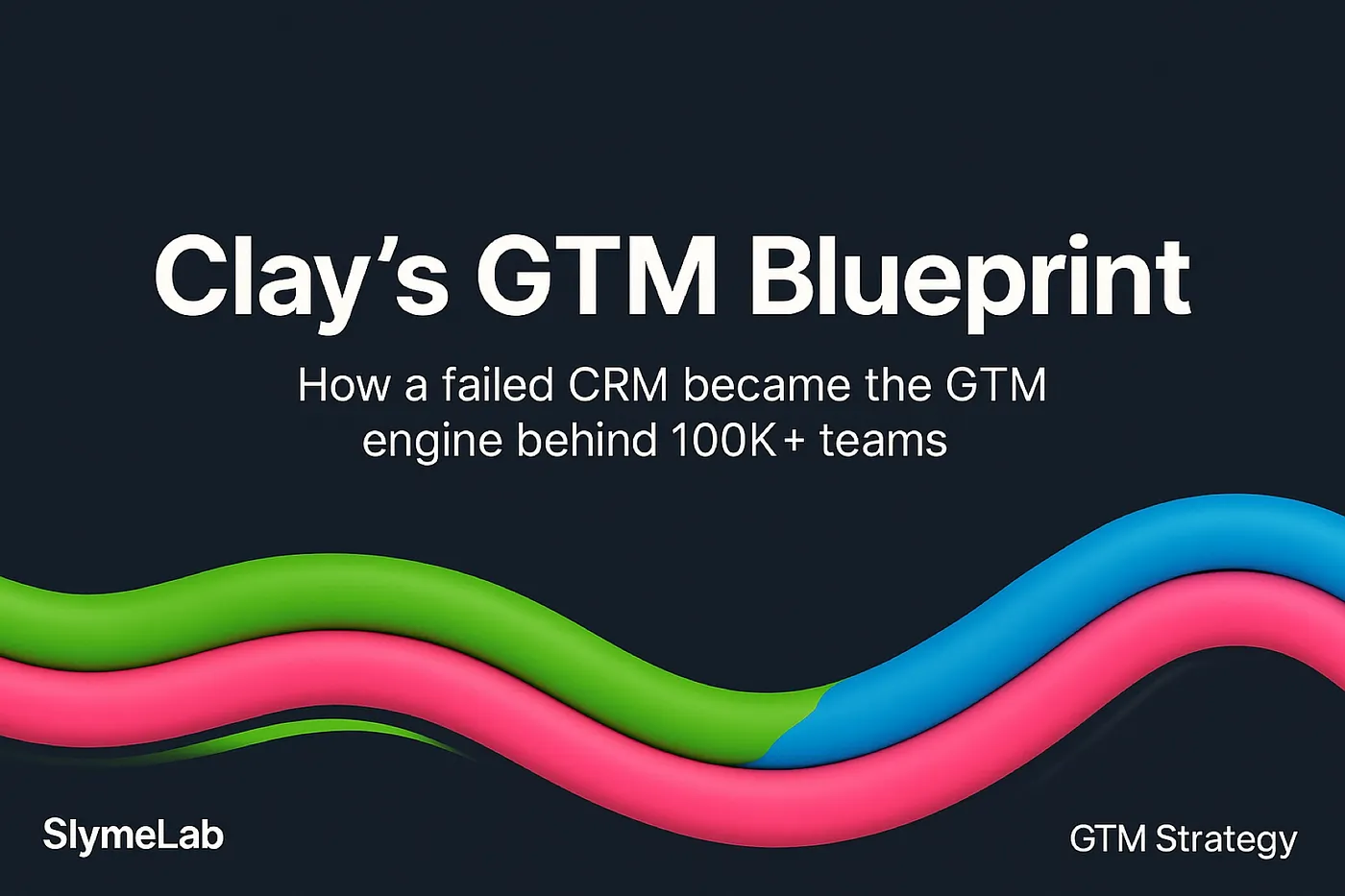Clay's GTM Superpower: How Systems Thinking Redefined SaaS Growth
How a failed CRM became the GTM engine behind 100K+ teams by thinking in systems, not features.

Most SaaS companies think about GTM as a series of tactics: launch features, run campaigns, optimize funnels. Clay took a radically different approach—they built their entire go-to-market strategy as an interconnected system.
The result? From a failed CRM to powering 100,000+ teams in less than 3 years. Here's how systems thinking transformed their growth trajectory.
The Systems Thinking Shift
Instead of optimizing individual GTM components, Clay designed their entire strategy as a self-reinforcing system where each element amplifies the others.
From Failed CRM to GTM Engine
Clay's story begins with failure. Their initial CRM product couldn't compete with established players like Salesforce and HubSpot. But instead of pivoting completely, they made a crucial systems-thinking decision: they analyzed why their CRM failed and turned those insights into their competitive advantage.
The Failure Analysis Framework:
- Data Quality Problem: CRMs fail because of poor data input
- Manual Process Bottleneck: Sales teams hate data entry
- Integration Complexity: Connecting data sources is painful
This analysis revealed the real opportunity: instead of building another CRM, they could solve the fundamental data problem that makes all CRMs fail. This systems insight became their foundation.
Building the GTM System Architecture
Clay didn't just build a product—they architected an entire GTM system with three interconnected layers:
Product Layer
Data enrichment platform that solves the core CRM problem
Distribution Layer
Community-driven growth through power users and advocates
Feedback Layer
Continuous product improvement driven by user insights
Each layer reinforces the others: better product creates more advocates, more advocates provide better feedback, better feedback improves the product. This creates a compounding growth engine rather than linear tactics.
Community-First Distribution Strategy
Clay's most innovative systems decision was making community the center of their distribution strategy. Instead of traditional sales and marketing funnels, they built a self-reinforcing community ecosystem.
The Community Growth Loop:
This approach reduced customer acquisition costs while increasing retention and expansion. The community became both a distribution channel and a product moat.
Systems Thinking Takeaways
1. Turn Failures Into System Insights
Clay's CRM failure revealed the core system problem: data quality. Instead of avoiding the problem, they made it their competitive advantage.
2. Design Reinforcing Loops
Every GTM component should strengthen the others. Clay's community doesn't just drive acquisition—it improves the product and reduces support costs.
3. Make Distribution Part of the Product
Clay's community isn't a marketing channel—it's a core product feature that creates value for users while driving growth.
The Systems Advantage
Clay's success isn't about having better features or more funding. It's about thinking in systems rather than tactics. They built a GTM architecture where every component amplifies the others, creating sustainable competitive advantage.
This systems approach is replicable across industries and business models. The key is identifying the core system problem your market faces and building your entire GTM strategy around solving it.